

E-mail this page to him!
Stents: A Reflection
Or What Happens When Doctors Focus Too Much on 'Modern' and Not Enough on 'Medicine'
OPINION By NORTIN HADLER, M.D.
Dec. 12, 2006 — - From time to time, every one of us gets a bee in our bonnet.
We have an idea that is so appealing, we can't let it go. It doesn't matter if others are less certain or even call the idea superstitious or unreasonable. But that belief feels so comfortable and so plausible that we defend it vigorously.
That sort of stubborn behavior is human nature. Physicians are human -- and, admittedly, stubborn.
Sometimes our beliefs turn out to be correct, to be prescient. Sometimes they don't.
Not long ago, tonsils were removed because they were swollen and uteruses because they were lumpy. Those surgeries turned out to be not so necessary and not so helpful. We got it wrong with stents, too. Let me tell you how.
Fifty years ago, heart attacks were a scourge. Everyone knew a working-age man who had dropped dead from one. Medicine seemed stymied. It was then that doctors learned what we all know now: The large arteries that feed the heart muscle, the coronary arteries, are clogged by a fatty buildup called atherosclerotic plaque in nearly every heart-attack patient.
Doctors thought cardiac surgery had made great strides in fixing leaky heart valves, so why not fix clogged arteries?
But removing the clog was too difficult, so pioneering surgeons developed ways to create blood vessels that actually went around -- or bypassed -- the obstructing plaques. Thus was born coronary-artery-bypass-graft surgery, or CABG. Experts firmly believed that if the blockage was bypassed, the patient was saved. There were skeptics. Skeptics breed controversy, and controversy sparks progress. Because to prove an idea wrong, skeptics must find a way to challenge and improve that idea.
Thanks to the skeptics, thousands of men with heart pain were soon enrolled in trials in the United States and Europe that compared CABG surgery with medical treatment -- such as drugs and a doctor's lifestyle advice. These studies continued for more than a decade, until around 1980. The results weren't very encouraging for those who believed in heart surgery. With the exception of a small group, the patients who underwent CABG did not live any longer than those treated medically.
Even worse, a lot of the CABG patients died before they could leave the hospital, about half had a stormy recovery, and nearly that many experienced memory loss that lasted a year after surgery.
But it's not easy to give up a belief. Besides, about 3 percent of all patients who have a particular kind of artery blockage, have been helped.
See, said the believers, there is some truth to our belief that plaques were the evil and CABG was the answer.
Doctors thought that as surgical skills got better, CABG surgery would start saving more patients. Instead, progress was slow and uncertain. But doctors didn't think surgery was the wrong idea -- they didn't question their own basic belief. Instead, doctors thought the grafts just didn't last long enough.
That's when another idea came along from Switzerland. Rather than bypass the blockage, just put a balloon into the middle of it and blow the balloon up, thereby smashing the plaque and opening up the vessel. The technique is called angioplasty. It is less invasive than CABG but no more effective. Doctors quickly realized that after angioplasty -- just like after CABG -- the vessel rapidly clogged up again, like a pipe clog that wasn't really fixed.
Maybe that's why angioplasty wasn't as helpful as many believed it should be. Enter stents. Stents are wire tubes inserted into the artery after the plaque is smashed by an angioplasty balloon. Then the artery can't clog again, doctors believed, because the wire stent would prop the artery open.
Wrong. These plain stents clogged at least as quickly as the artery would have clogged without them. Besides, the patients did no better than if the stent had not been inserted, which was no better than if the plaque had not smashed, which is no better than if the patient had undergone CABG, which is no better than medical treatment (and medical treatment has advanced).
Undaunted and unbowed, the believers leaped at the next idea: Coat the stent with drugs that interfere with clotting, and thereby keep the vessel open. Finally, they made a difference -- for the worse. Patients were worse off for this idea. The Food and Drug Administration recently concluded that drug-coated stents may cause more harm then good.
Despite their own failures, cardiologists and cardiac surgeons still have this bee in their bonnet. They talk about new procedures, new widgets and gizmos but don't wonder whether they are chasing after the wrong idea. They manage to sting over a million American hearts each year with the bee in their bonnet. But maybe gee-whiz gizmos aren't the answer.
You have two options: Avoid the sting of experimental surgeries, or survive it. I prefer the former. If I have heart pain, I'd want a doctor's advice and watchful eye, along with aspirin and a few other drugs. No, I'm not willing to go quietly into the great unknown. But I'm at least as likely to do well with some medications as with letting someone do violence to the plaque in my coronary arteries.
And I am likely to do well. Heart attacks are no longer the scourge they were 50 years ago. My chance of having my first heart attack is 30 percent less than was my father's at my age. And the chance of surviving five years after my first heart attack is 96 percent; his was 50 percent. And I can raise it to 98 percent with a touch of aspirin.
We don't know why heart attacks are no longer so common or so evil. But gizmos, gadgets and drugs deserve little, if any, credit.
I'll take my chances, thank you.
Dr. Nortin M. Hadler is a professor of medicine and microbiology/immunology at the University of North Carolina at Chapel Hill, and attending rheumatologist at the University of North Carolina Hospitals in Chapel Hill, N.C.




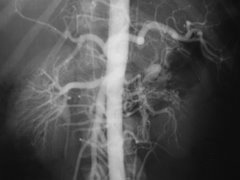
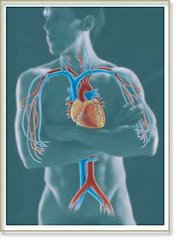
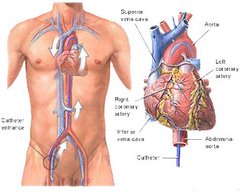
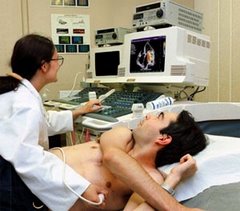
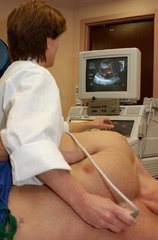
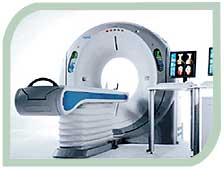
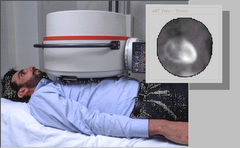
No comments:
Post a Comment